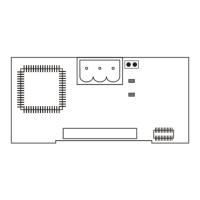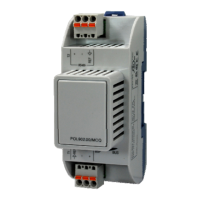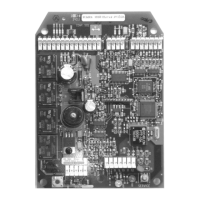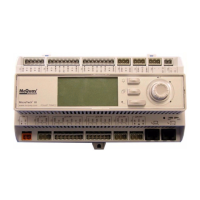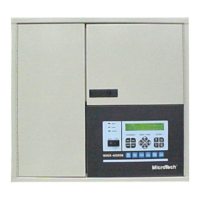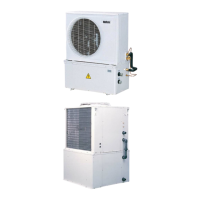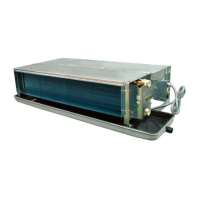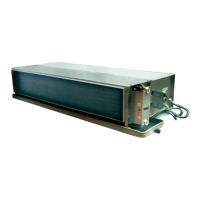IM 474-3
19
Go to the last controller on one end of the daisy-chain and place a jumper across the “+” and “–”
terminals. Then go to the last controller on the other end of the daisy-chain and use an ohmmeter
to test for continuity across the “+” and “–” terminals.
Remove the jumper and repeat this step for the other two conductor pairs: “+” to “ground” and “–” to
“ground.”
If there is continuity for each conductor pair, the wiring is continuous and it is likely (but not
guaranteed) that the terminations are correct throughout the trunk.
If there is no continuity for one or more conductor pairs, there may be a break in the trunk or the
terminations at one or more controllers may have been mixed up.
Procedure 2: OPM Connection
The OPM (or its substitute) is connected to the trunk first so that the PC can communicate with the
level-2 controllers when they are connected.
1.
Set the OPM’s hex switches to 00 (level 1). See “About the Network Address” above for more
information.
2.
Push the circuit breaker (CB1) button to power up the OPM and verify that there is power to the
MCB by observing the LEDs.
3.
Check the voltages of port B directly on the port.
Use a DC voltmeter to test for proper voltages. With the ground lead on the control panel chassis
(ground), check the voltage at the “+,” “–,” and “ground” terminals. Refer to Table 7 for the
correct voltage levels.
If no voltage or improper voltage levels are found, verify that the panel is energized.
4.
Plug the network communications connector (Phoenix or AMP plug) into port B.
Procedure 3: Level-2 Controller Connection
This procedure will verify that proper communications have begun for each controller as it is
connected to the network. You can connect the level-2 controllers in any order; however, it is better to
follow the daisy-chain as you proceed. This will make troubleshooting easier if communications
problems occur.
Note:
To verify communications more quickly and easily, use two people to commission the network.
When there are two people, one person can stay at the PC connected to the OPM and the other person
can go to each individual unit controller. Using a set of radios or other two-way communication
equipment, you can tell each other when a specific controller is connected and whether
communications between the controllers is occurring.
As a result of the previous procedures, the network communications connector should be
disconnected from the B port at every controller on the trunk except for the OPM. Be sure that this is
true before beginning this procedure.
For communications to occur, each networked controller must have the proper hex switch setting and
the proper voltages at its port B terminals.
1.
Set the network address (hex switch setting) to match the address on the engineering schedule.
Each controller must have a unique address.
2.
Turn on power to the level-2 controller. Refer to the controller installation manuals for
information on how to turn on power to each controller. (If the power was already on, turn it off
and then on again to set the network address into memory.)
3.
Check the voltages of port B directly on the port. The trunk must not be connected to the
controller when you do this.
Use a DC voltmeter to test for proper voltages. With the ground lead on the control panel chassis
(ground), check the voltage at the “+,” “–,” and “ground” terminals. Refer to Table 7 for the
correct voltage levels.
